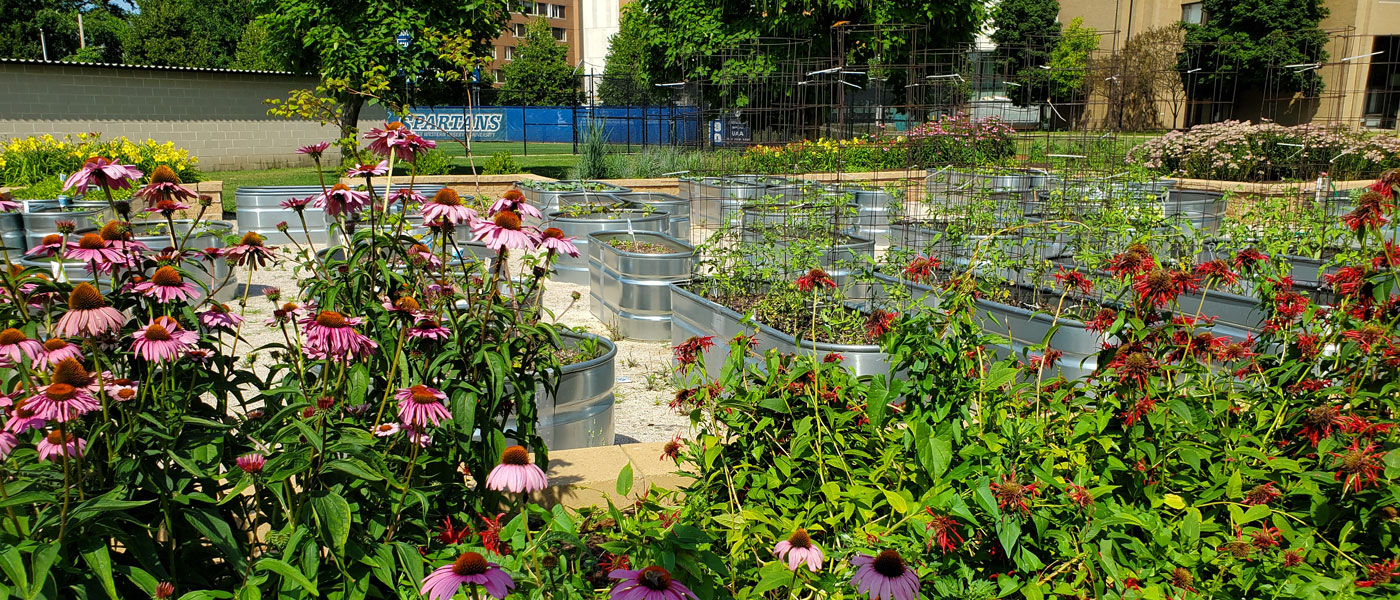Each year, staff at Case Western Reserve University Farm in Hunting Valley and volunteers at the Garden@Case on campus work diligently to maintain crops that help feed members of the campus community—and beyond. Their efforts result in fresh produce used at the university’s dining halls, local restaurants, and in collaboration with local organizations, such as The Hunger Network.
Planning to start your own garden this summer? Staff members Sarah Warner and Jonas Portillo from the University Farm and leaders of the volunteer effort Garden@Case Brian Gray and Juan Jeffrey shared their insights to help you make the most of the upcoming growing season.
“Gardening is a great way to begin new friendships,” said Gray and Jeffrey. “If you’re feeling disconnected from other people, join an established garden or start a new one in your area. Everyone loves food.”
Whether you already have a green thumb or struggle to keep your plants alive, their tips are sure to help you give your garden a boost.
Start small
While it can be tempting to grab a bunch of seed packets, representatives from the University Farm and Garden@Case encourage beginners to start slowly when establishing a garden. Some easier crops to consider include hot peppers, onions, tomatoes, bush beans and herbs, such as basil.
It’s also important to keep in mind how much space your plants need to grow, and avoid overcrowding. Seed packets typically offer guidance for how much space each plant needs to thrive.
Plus, doing too much too soon can cause you to run out of energy. A small four square-foot garden can be successful—or you can even use tote bins or water jugs, Gray and Jeffrey said.
Incorporate sustainability into your garden
Even small gardens can include sustainable elements. Composting is one method to improve your garden, while limiting waste. Kitchen scraps and garden “waste” that have been composted can be added to soil to deliver extra nutrients to plants.
To make the most of your seeds, invest in high-quality products and consider participating in seed-exchange programs and finding local seed banks.
As you start your garden, you may end up with leftover supplies and plant containers. These can be reused to haul harvests, protect plants from pests or weather, and other tasks.
Consider also adding rain-capturing systems—such as rain barrels or small rain gardens in wet areas of the yard. Drip irrigation is a sustainable option for watering plants, as opposed to doing it from above or with a sprinkler.
Avoid common mistakes
One common mistake Gray and Jeffrey with the Garden@Case see gardeners make is to add sand to soil to loosen it. They note that in Ohio, this is not necessary as most areas have high clay content. Instead, organic material, such as compost, is a better alternative.
Notice that your plant looks a bit off? Don’t immediately jump to giving it more water. It might be affected by another problem, such as missing soil nutrients, pests or mold/fungus.
As your garden stretches into new seasons, rotate your crops to reduce the chance that pests will accumulate in the same spot.
Don’t stop learning
Gray and Jeffrey encourage those who need advice to connect with the Cuyahoga County OSU Extension Office, which is a free local resource.
Remember to be patient when gardening; each plant grows at its own rate. It’s also important to keep in mind that not everything will work in all spaces. Experiment to find out what works best for your garden.
Check out the University Farm website and Garden@Case CampusGroups page to see what they’re working on—including how to visit and get involved.

